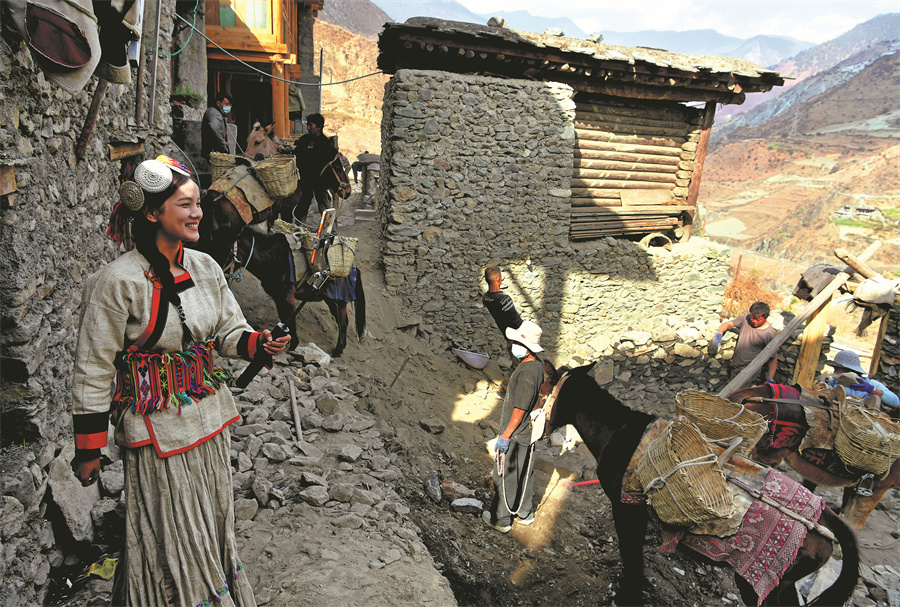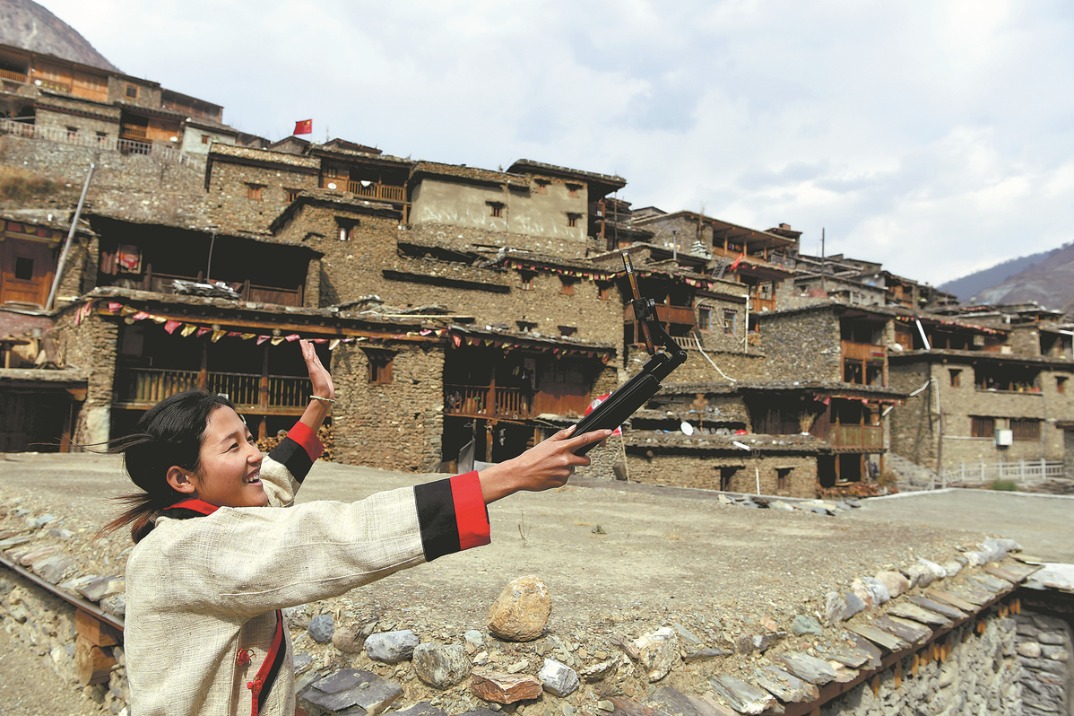Livestreaming showcases village's ancient traditions
Global awareness of unique culture, heritage boosted by modern technology


Eya Village, located deep in the mountains of the Muli Tibetan autonomous county of Liangshan in the Sichuan-Yunnan border region of China, is known for its unique honeycomb-like architecture. The village, which is primarily inhabited by the Naxi ethnic group, preserves ancient farming practices, Naxi customs, Dongba papermaking and caravan culture.
Once isolated, the village is bridging the gap between tradition and modernity through livestreaming, led by female villagers.
On a misty March morning in 2025, Kemi films her family's traditional routines of their farmland. Her 20,000 followers tune in to witness their daily life.
Nearby, Jixiao broadcasts Dongba priest Yingzhacili writing Dongba script, a fading cultural treasure, on handmade paper. Though initially unfamiliar with the texts, Jixiao vows to learn, hoping to spark wider interest. "Livestreaming is a new way to keep our culture alive," says Yingzhacili.
By the Longda River, 23-year-old Wazhi showcases water mills grinding grain.
Meanwhile, "internet celebrity "Azierguma's online shop sells local handicrafts and herbs, earning over 200,000 yuan ($27,351) last year.
With nearly 140 women now sharing Eya Village's stories, their videos capture everything from seasonal farming to historic caravan routes, painting a vibrant picture of rural vitalization.
Through their lenses, ancient traditions in the village are finding a global audience, proving that even the most secluded villages can thrive in the digital age.























